

39 THE END OF EMPIRE - Mr. Davis' Virtual Classroom. Israeli-Palestinian Conflict Timeline. A Synopsis of the Israel/Palestine Conflict. The following is a very short synopsis of the history of this conflict.

We recommend that you also read the much more detailed account, "The Origin of the Palestine-Israel Conflict. " For centuries there was no such conflict. In the 19th century the land of Palestine was inhabited by a multicultural population – approximately 86 percent Muslim, 10 percent Christian, and 4 percent Jewish – living in peace.[1] Zionism In the late 1800s a group in Europe decided to colonize this land. At first, this immigration created no problems. UN Partition Plan. Nelson Mandela - Biography - President (non-U.S.), Writer, Civil Rights Activist. Nelson Mandela became the first black president of South Africa in 1994, serving until 1999. The History of Apartheid in South Africa. South Africa (see map) is a country blessed with an abundance of natural resources including fertile farmlands and unique mineral resources.
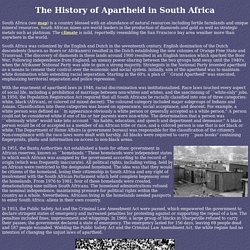
South African mines are world leaders in the production of diamonds and gold as well as strategic metals such as platinum. Apartheid. In 1976, when thousands of black children in Soweto, a black township outside Johannesburg, demonstrated against the Afrikaans language requirement for black African students, the police opened fire with tear gas and bullets.

The protests and government crackdowns that followed, combined with a national economic recession, drew more international attention to South Africa and shattered all illusions that apartheid had brought peace or prosperity to the nation. Suez Crisis - Cold War. The Israelis struck first, on October 26, 1956.

Two days later, British and French military forces joined them. Originally, forces from the three countries were set to strike at once, but the British and French troops were delayed. History - Historic Figures: Jawaharlal Nehru (1889-1964) Non-Aligned Movement (NAM) NAM Established: 1961.
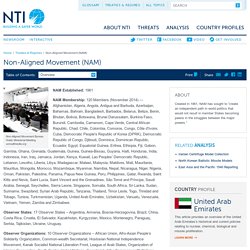
Deng Xiaoping - Biography - - Biography.com. Synopsis Deng Xiaoping was born on August 22, 1904 in Guang’an, rising through political ranks to become the communist leader who ruled China from the late 1970s until 1997.

He abandoned many communist doctrines and incorporated elements of the free-enterprise system into the economy. Deng engineered reforms in virtually all aspects of China's political, economic and social life, restoring the country to domestic stability and economic growth after the excesses of the Cultural Revolution though cementing an inequality gap as well. The Balfour Declaration, 1917 (History and Full Text) The Balfour Declaration was a November 2, 1917 letter from British Foreign Secretary Arthur James Balfour to Lord Rothschild that made public the British support of a Jewish homeland in Palestine.
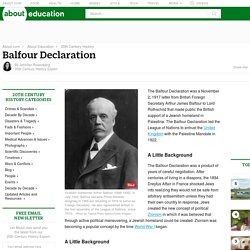
Tiananmen Square. A massive demonstration for democratic reform, begun on Tiananmen Square by Chinese students in April, 1989, was brutally repressed on June 3 and 4, 1989.
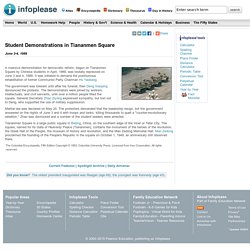
It was initiated to demand the posthumous rehabilitation of former Communist Party Chairman Hu Yaobang. The government was tolerant until after his funeral; then Deng Xiaoping denounced the protests. The demonstrators were joined by workers, intellectuals, and civil servants, until over a million people filled the square. General Secretary Zhao Ziyang expressed sympathy, but lost out to Deng, who supported the use of military suppression.
Martial law was declared on May 20. 5 Things You Should Know About the Tiananmen Square Massacre. Twenty-five years ago Wednesday, Chinese troops violently retook the square in Beijing where pro-democracy protesters had set up camp for weeks.
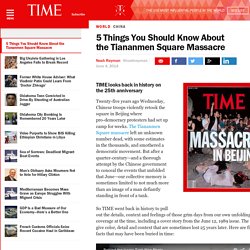
The Tiananmen Square massacre left an unknown number dead, with some estimates in the thousands, and smothered a democratic movement. But after a quarter-century—and a thorough attempt by the Chinese government to conceal the events that unfolded that June—our collective memory is sometimes limited to not much more than an image of a man defiantly standing in front of a tank. So TIME went back in history to pull out the details, context and feelings of those grim days from our own unfolding coverage at the time, including a cover story from the June 12, 1989 issue. The articles give color, detail and context that are sometimes lost 25 years later. Here are five key facts that may have been buried in time: History - Historic Figures: Ho Chi Minh (1890-1969)
Ho Chi Minh - Vietnam War. When Germany defeated France in 1940, during World War II, Ho saw it as an opportunity for the Vietnamese nationalist cause.
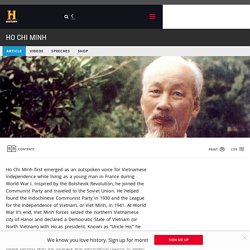
Around this time, he began to use the name Ho Chi Minh (roughly translated as “Bringer of Light”). With his lieutenants Vo Nguyen Giap and Pham Van Dong, Ho returned to Vietnam in January 1941 and organized the Viet Minh, or League for the Independence of Vietnam. Forced to seek China’s aid for the new organization, Ho was imprisoned for 18 months by Chiang Kai-Shek’s anti-Communist government.
Gandhi Is Killed By A Hindu; India Shaken, World Mourns; 15 Die In Rioting In Bombay Three Shots Fired. The Assassination of Gandhi, 1948. The Assassination of Gandhi, 1948 "Just an old man in a loincloth in distant India: Yet when he died, humanity wept. " This was the observation of a newspaper correspondent at the death of Mahatma Gandhi. The tragedy occurred in New Delhi as the gaunt old man walked to a prayer-meeting and was engulfed by one of history's great ironies - a life-long pacifist and promoter of non-violence struck down by an assassin's bullet.
Gandhi's violent death came just months after the realization of his long sought-after goal - the independence of India from Great Britain. It was a bittersweet victory for Gandhi because along with India's independence came the partitioning of the sub-continent into two separate states - Muslim-based Pakistan and Hindu-based India - an action he thoroughly opposed.
Vincent Sheean was an American reporter and author who had covered trouble spots around the world in the years prior to and during World War II. We both looked at our watches again.